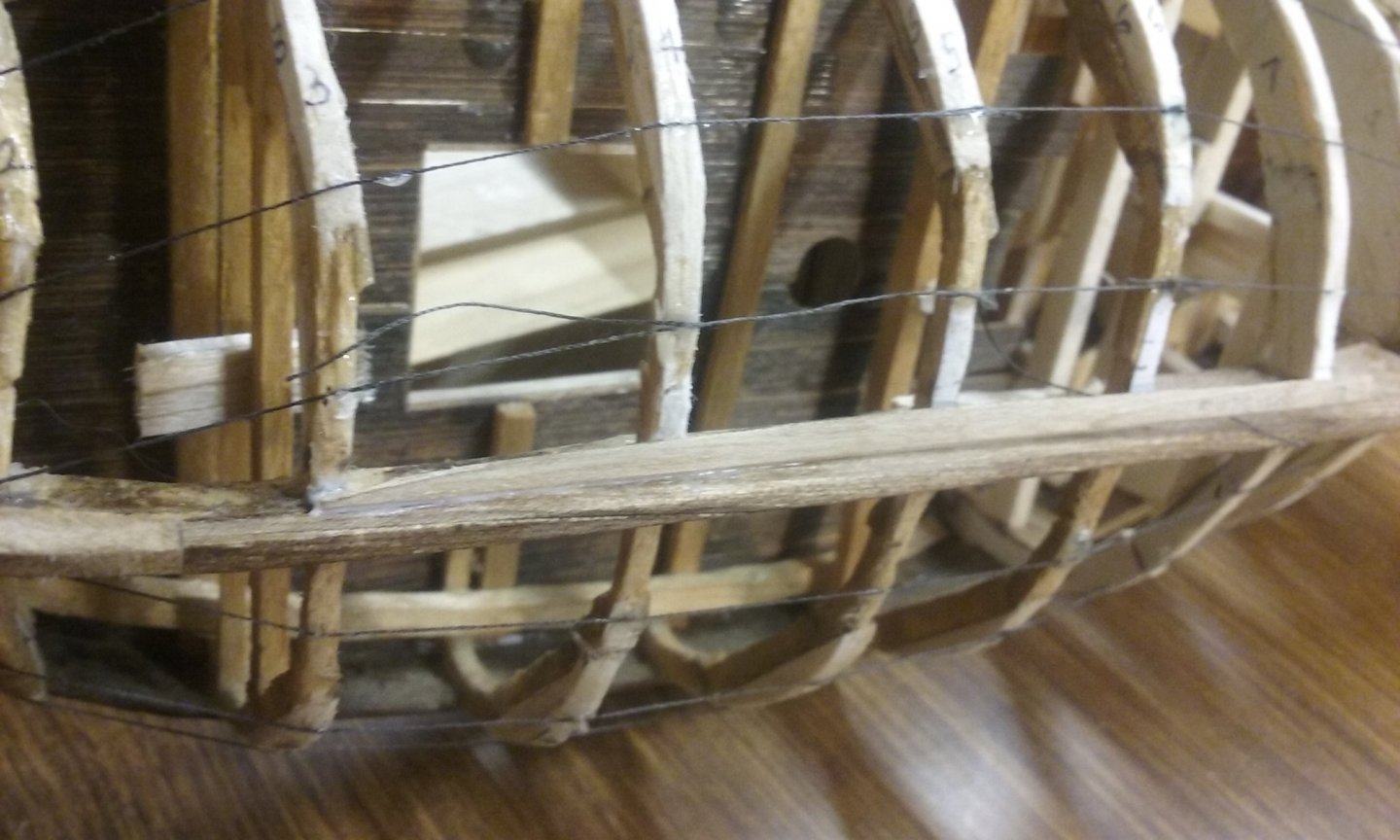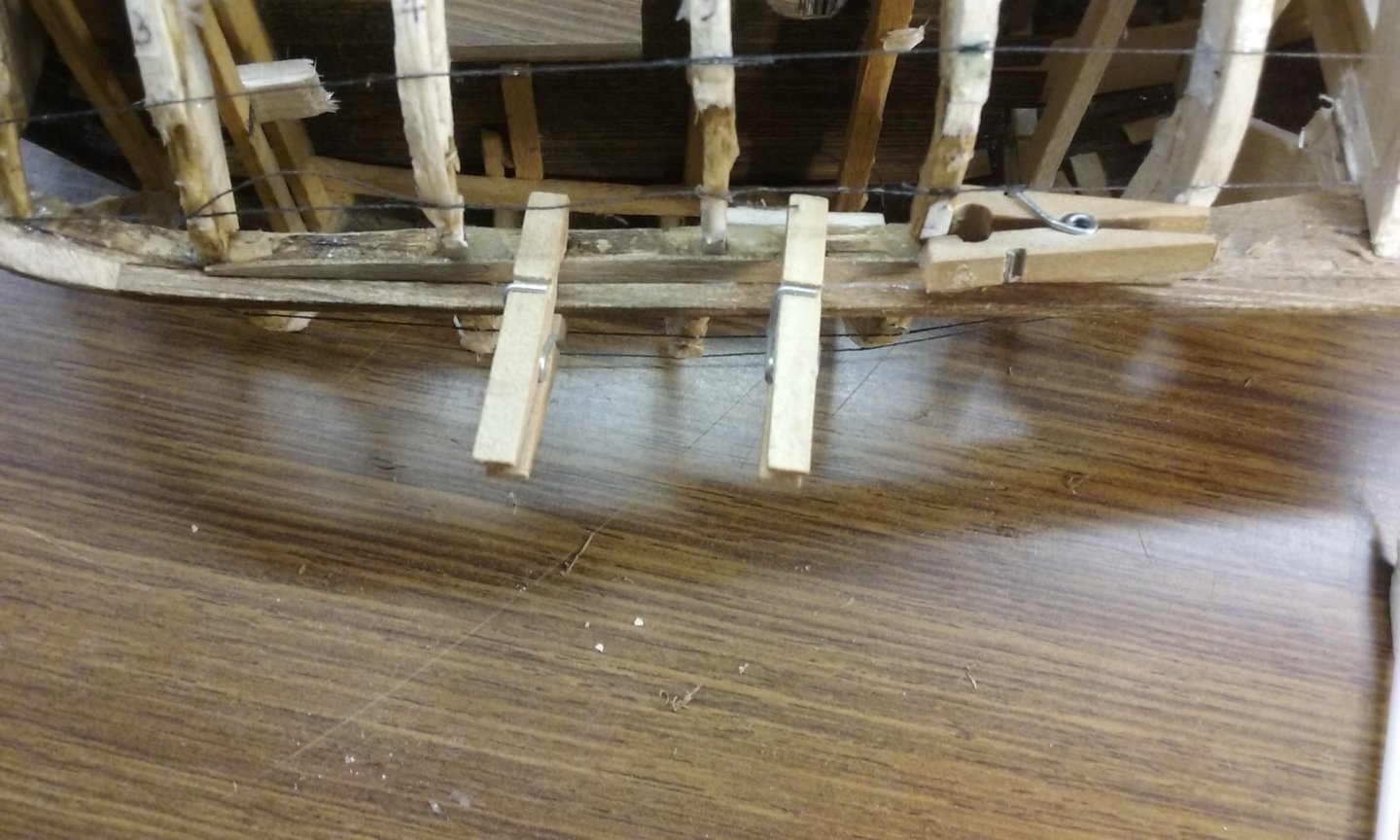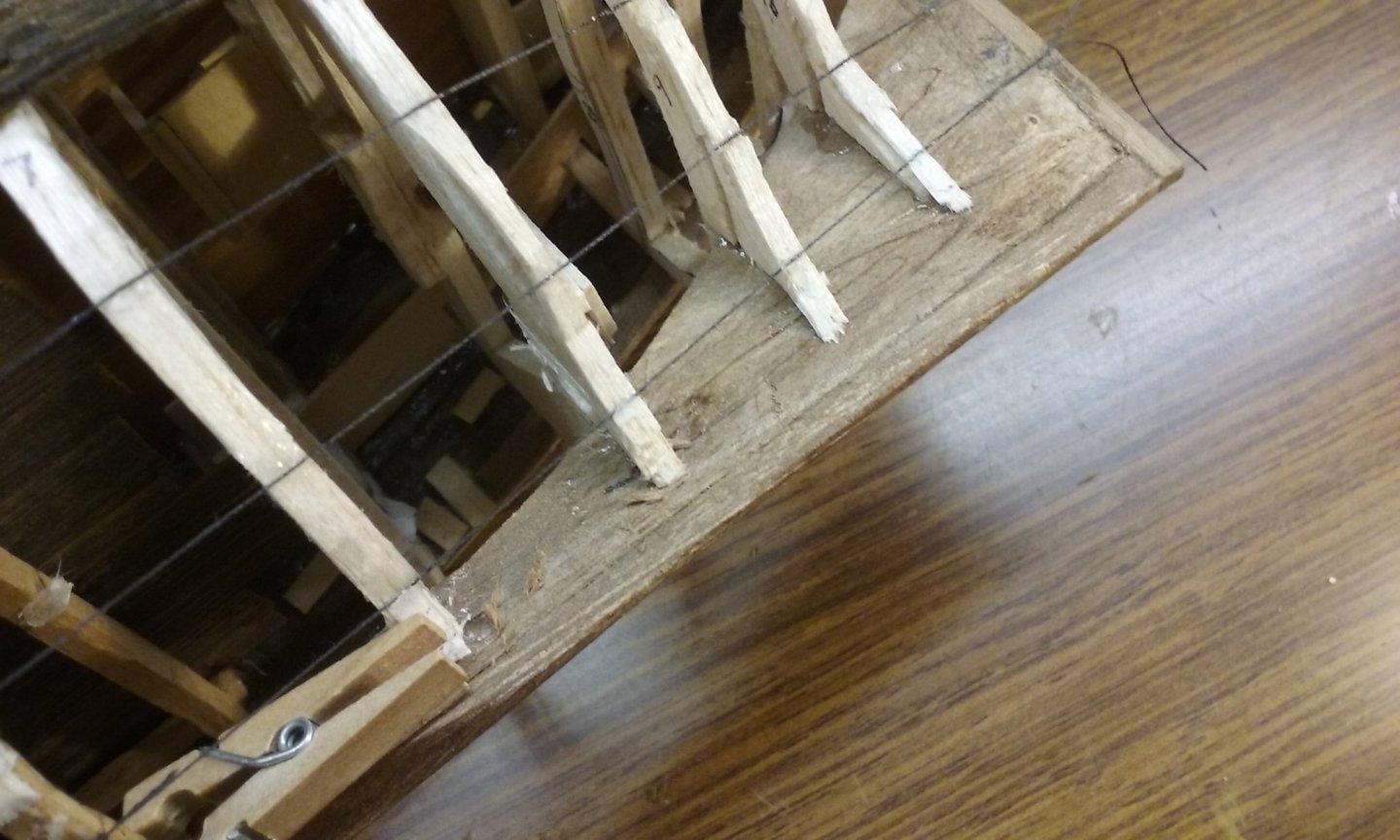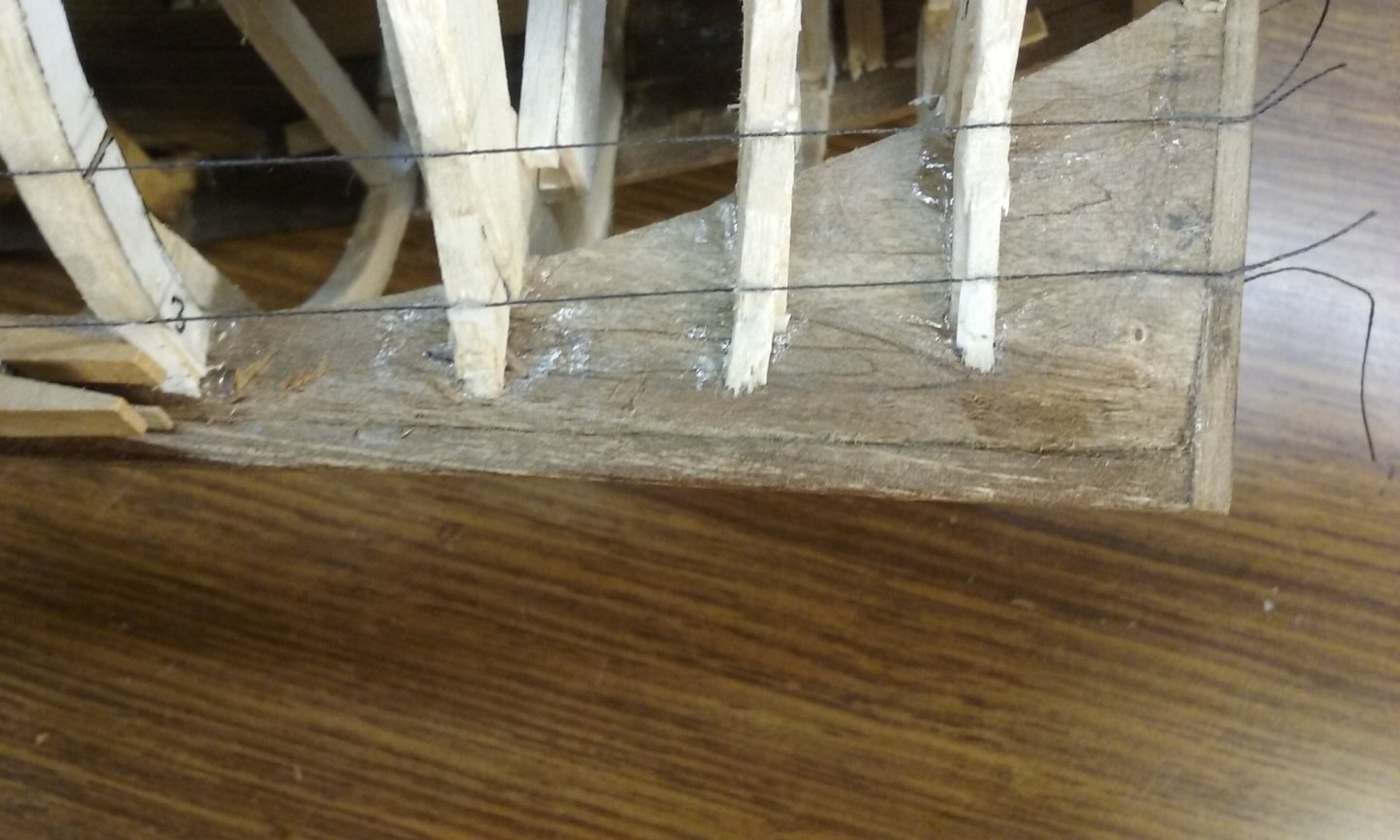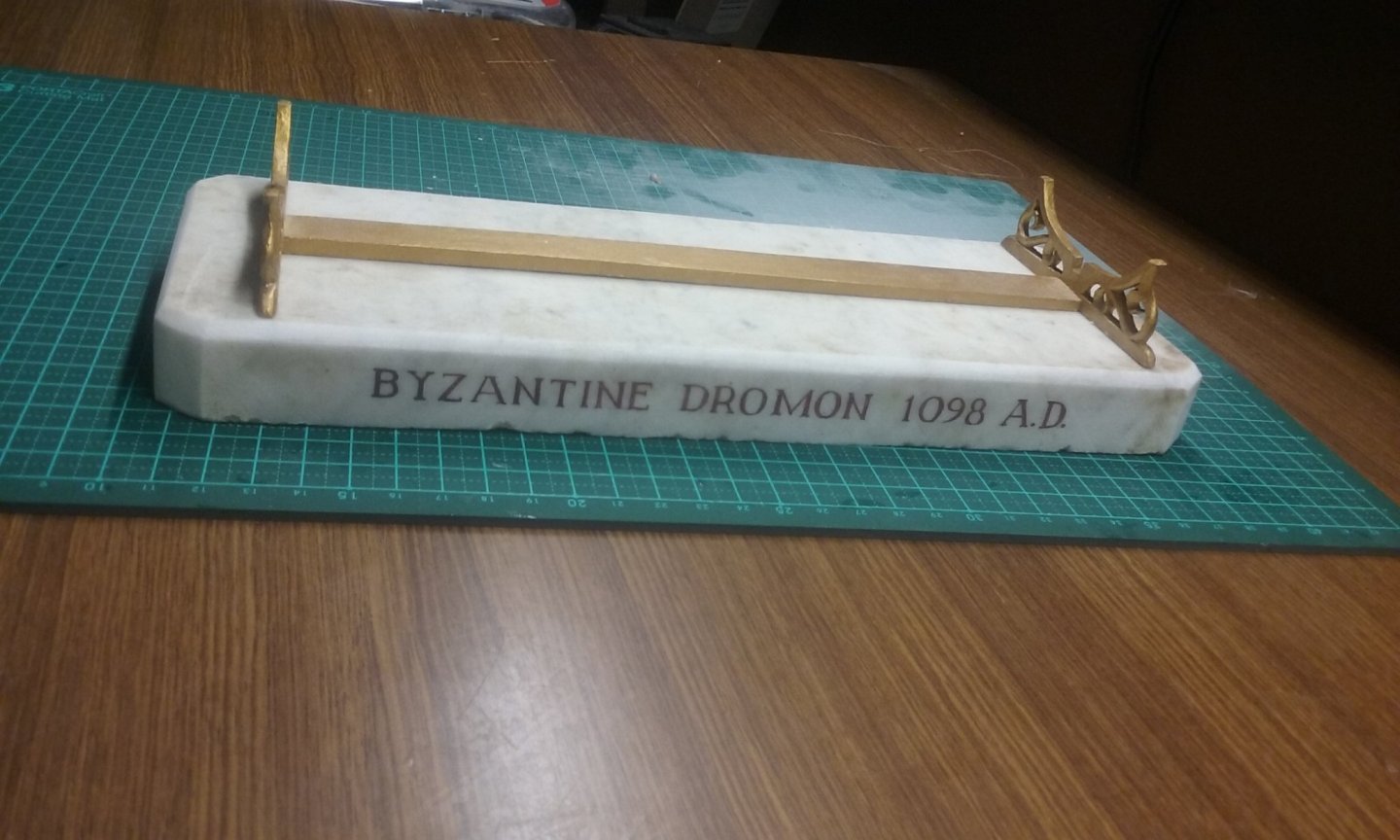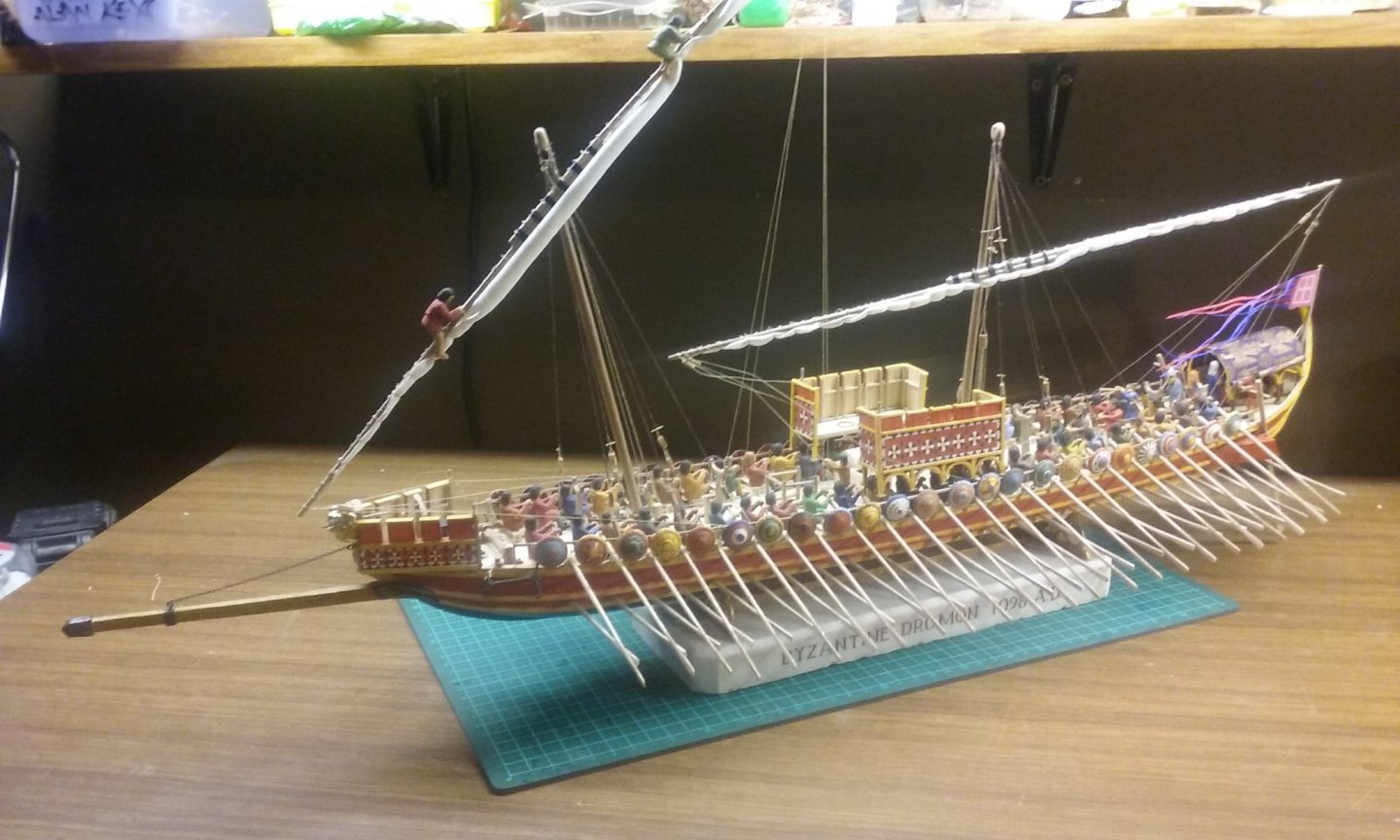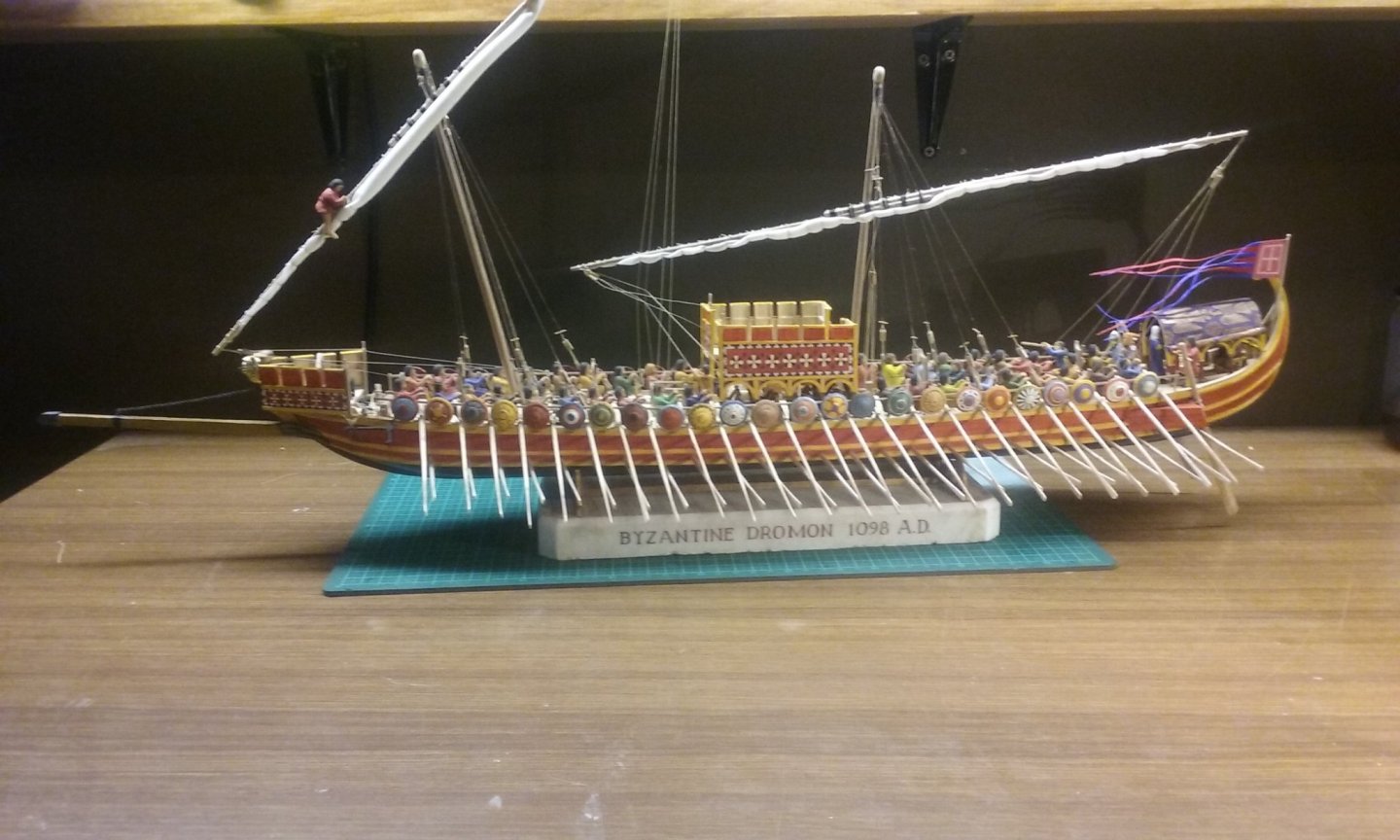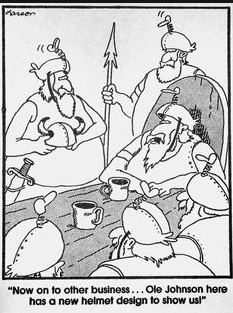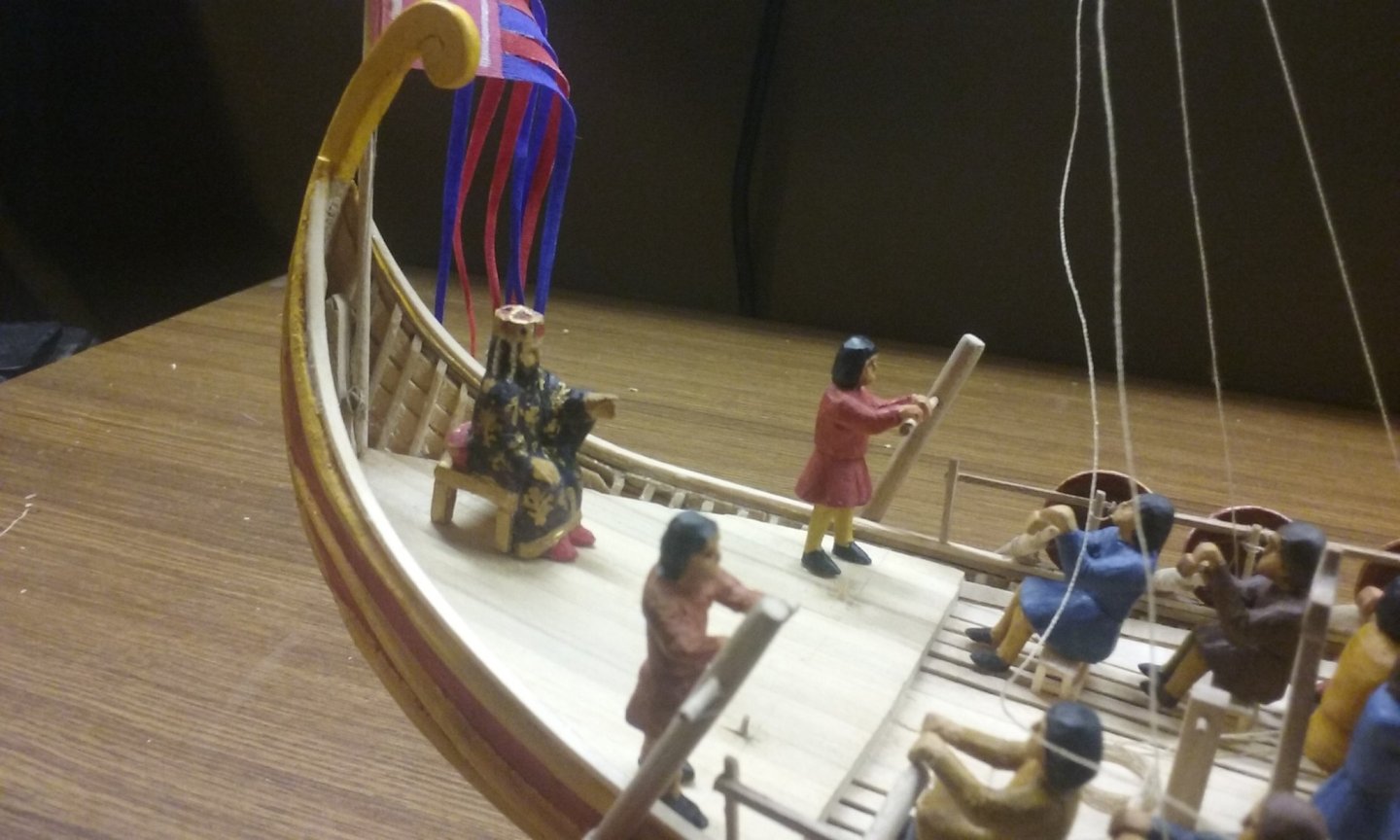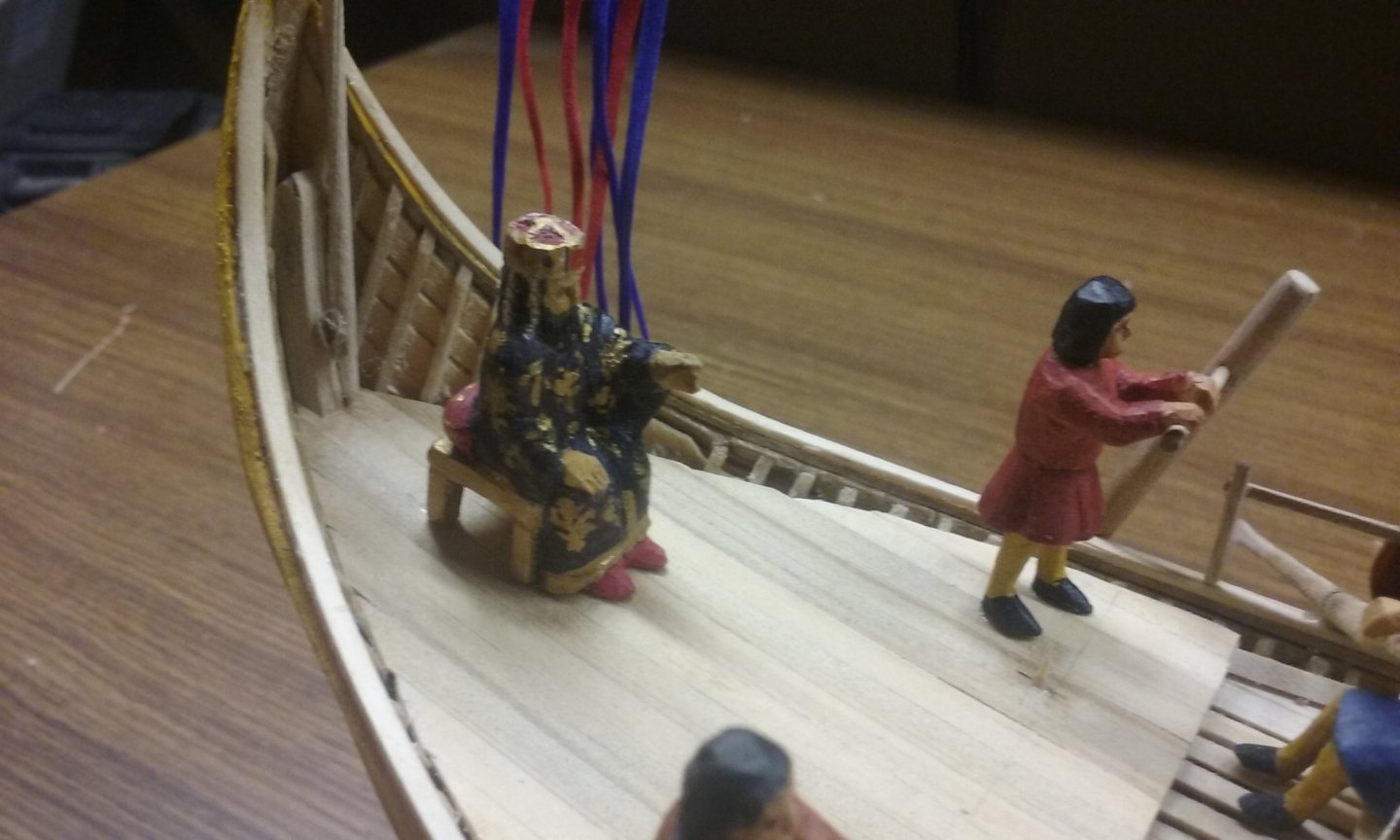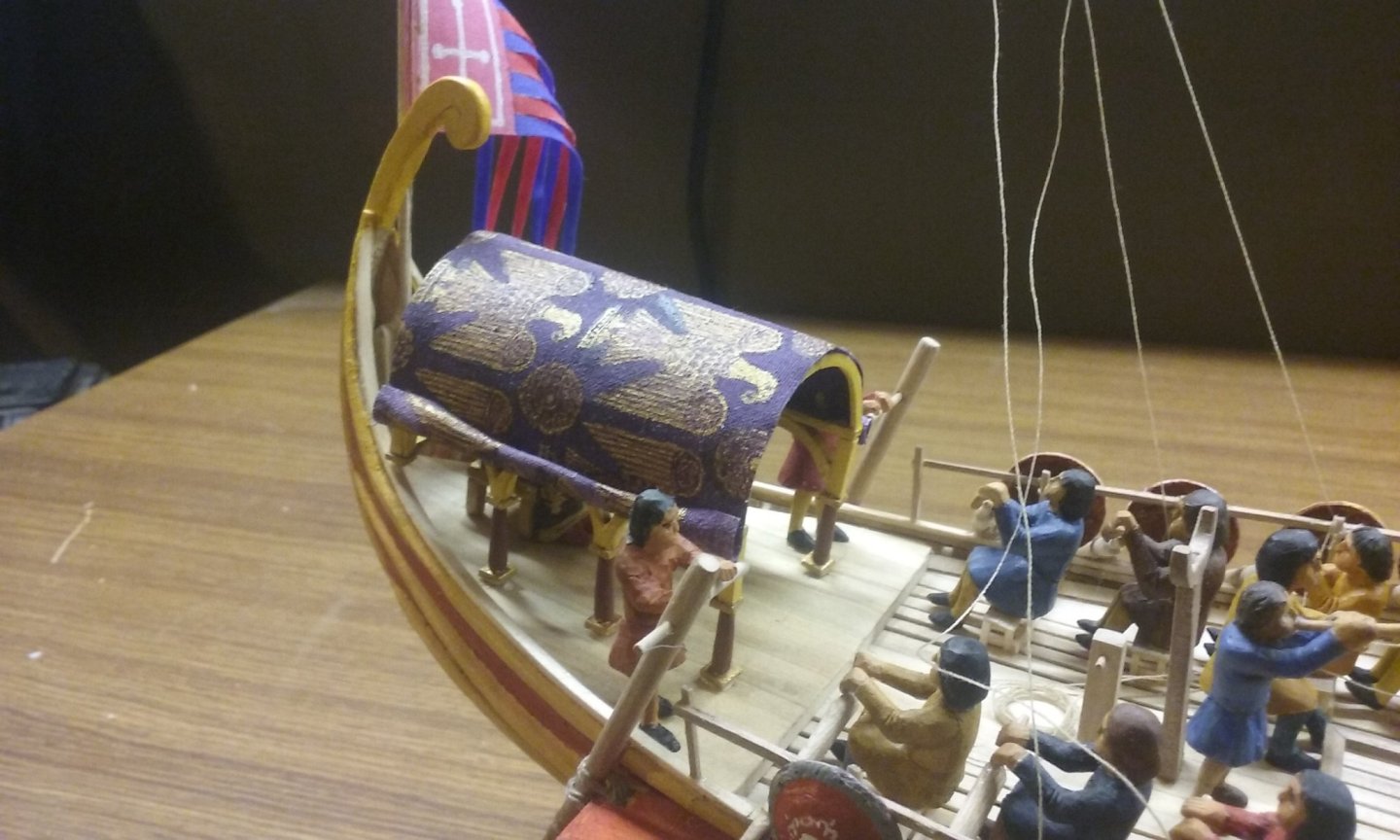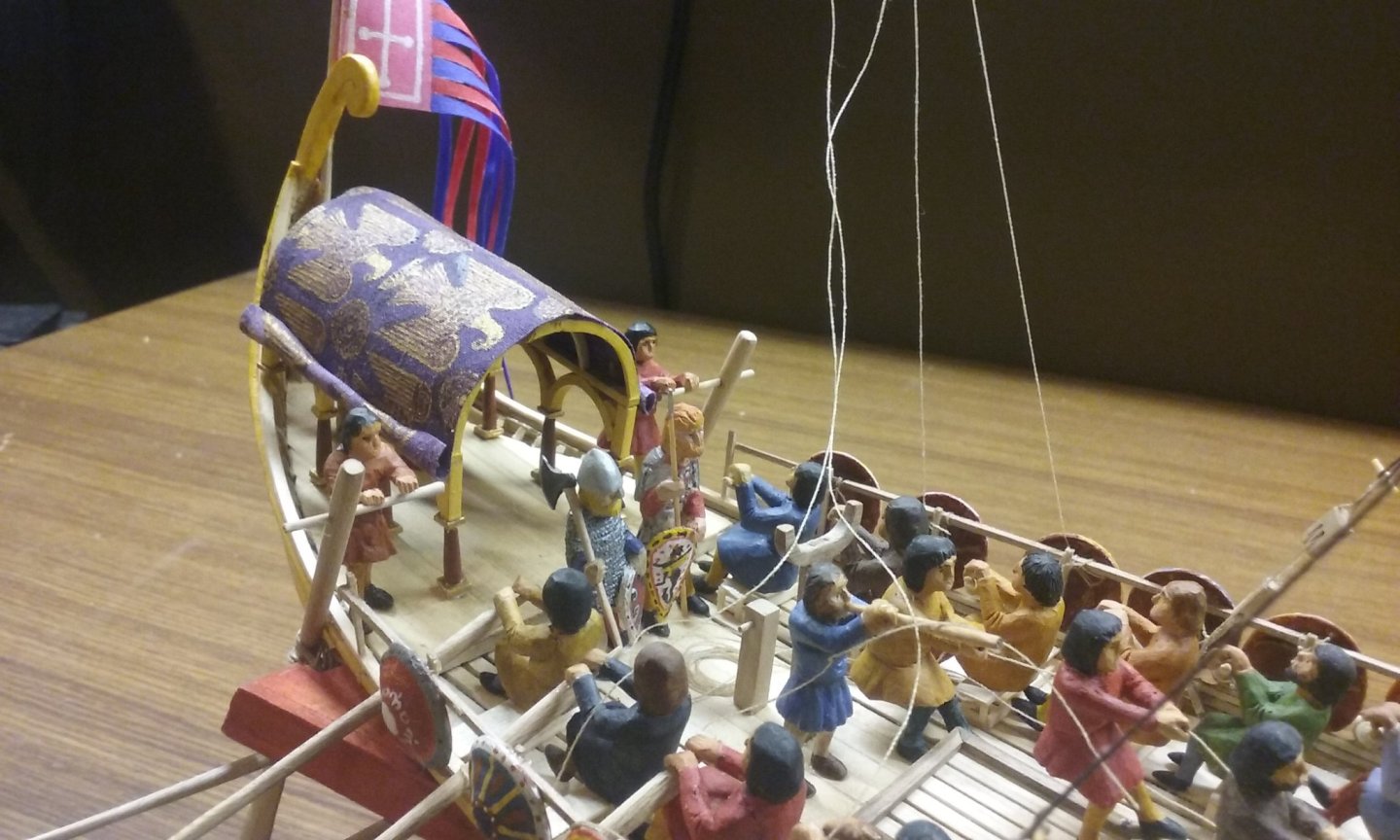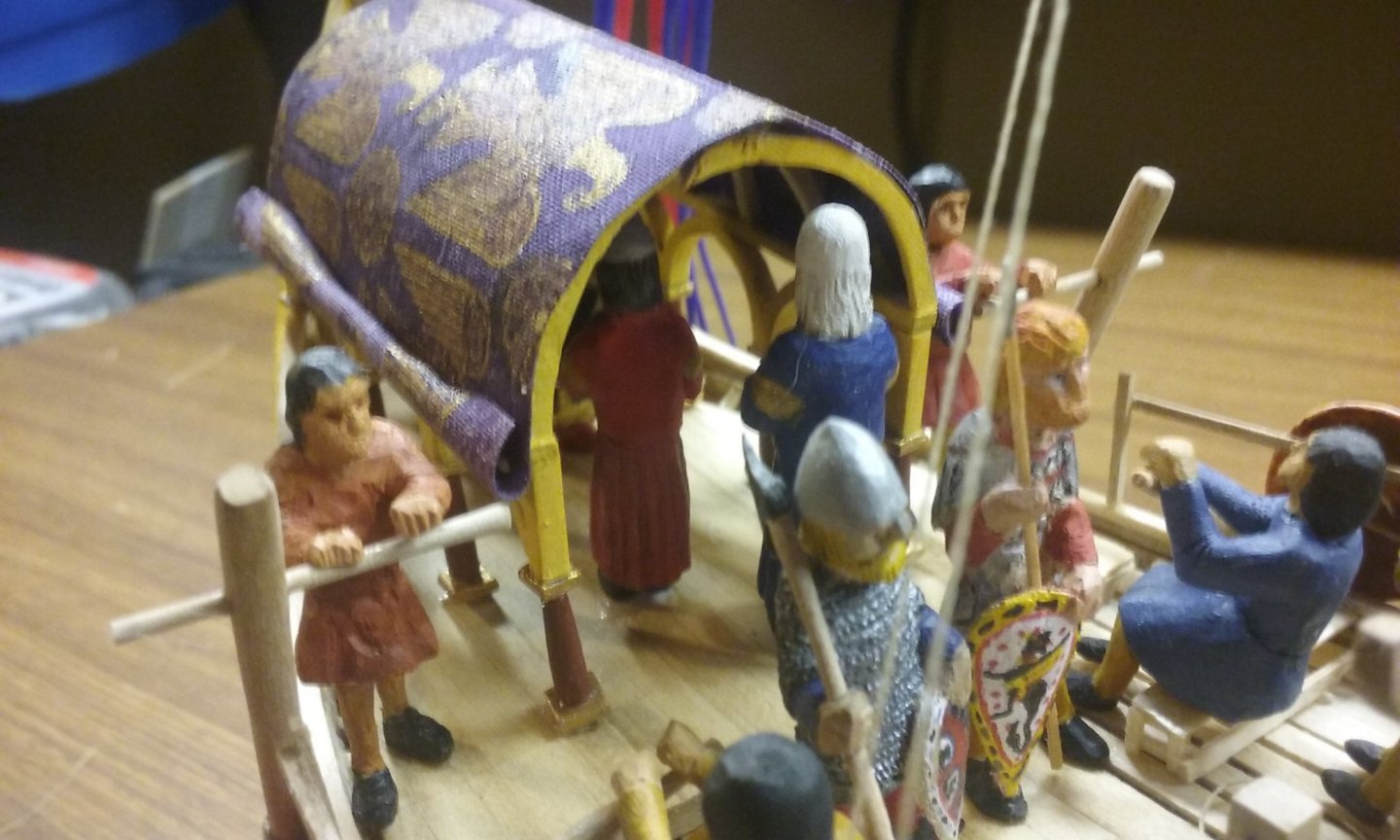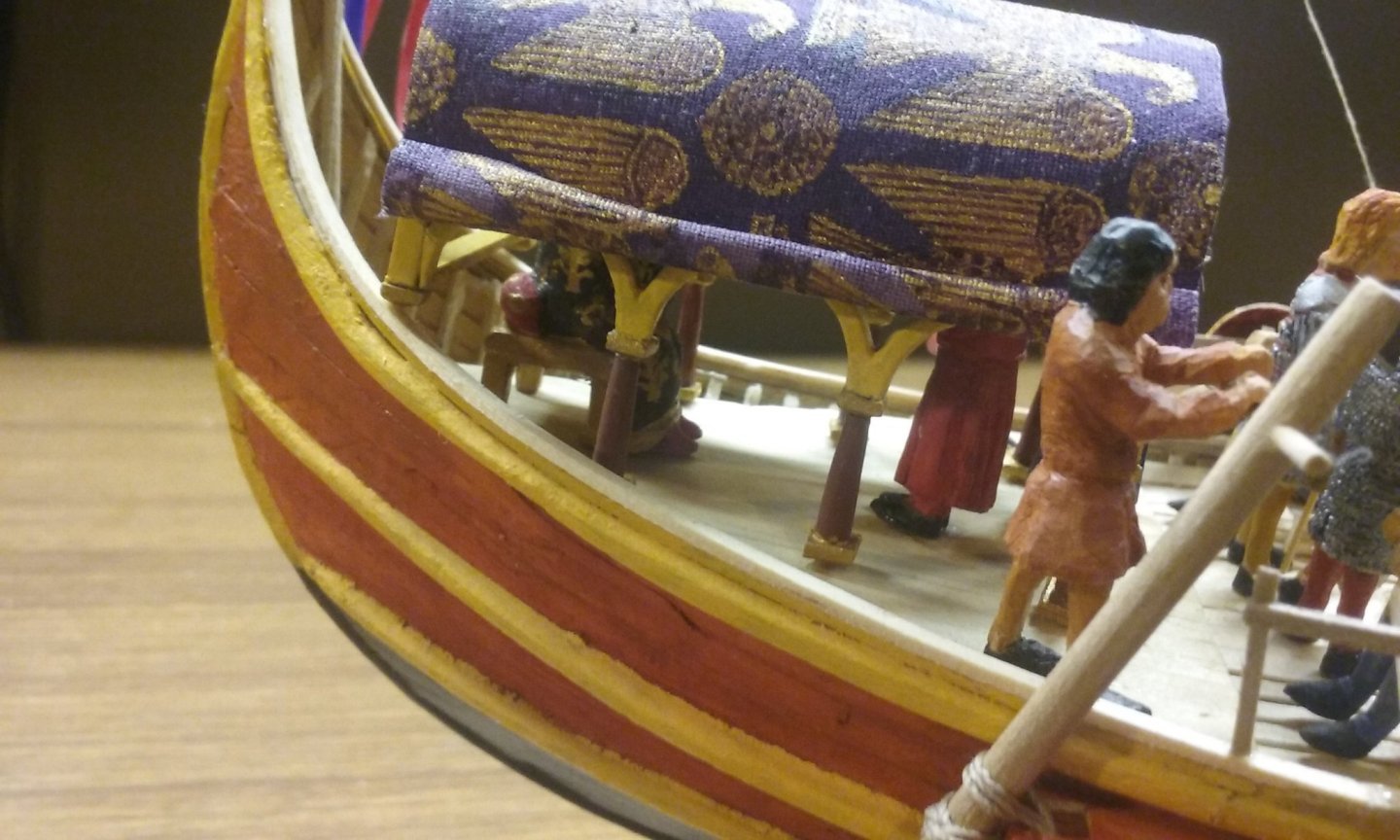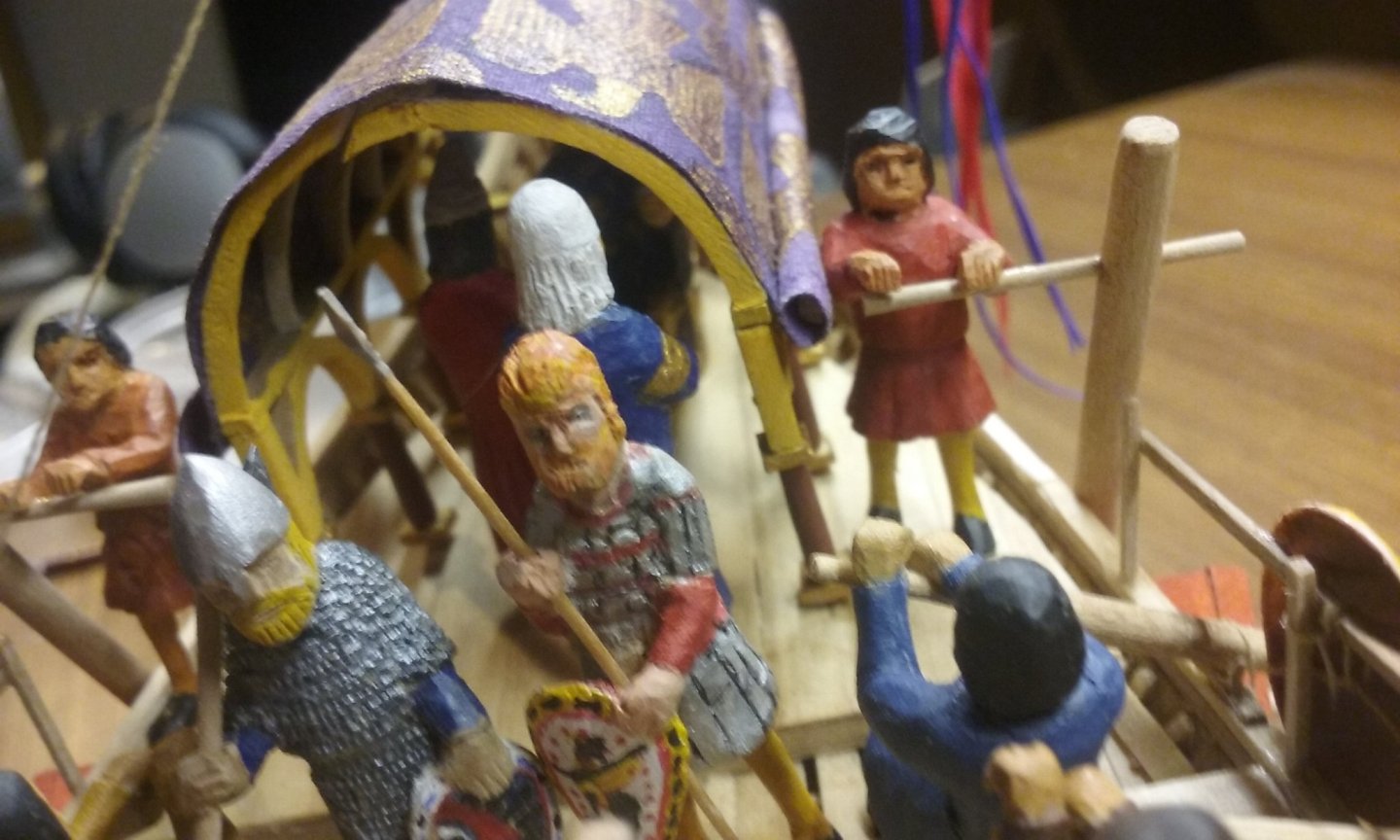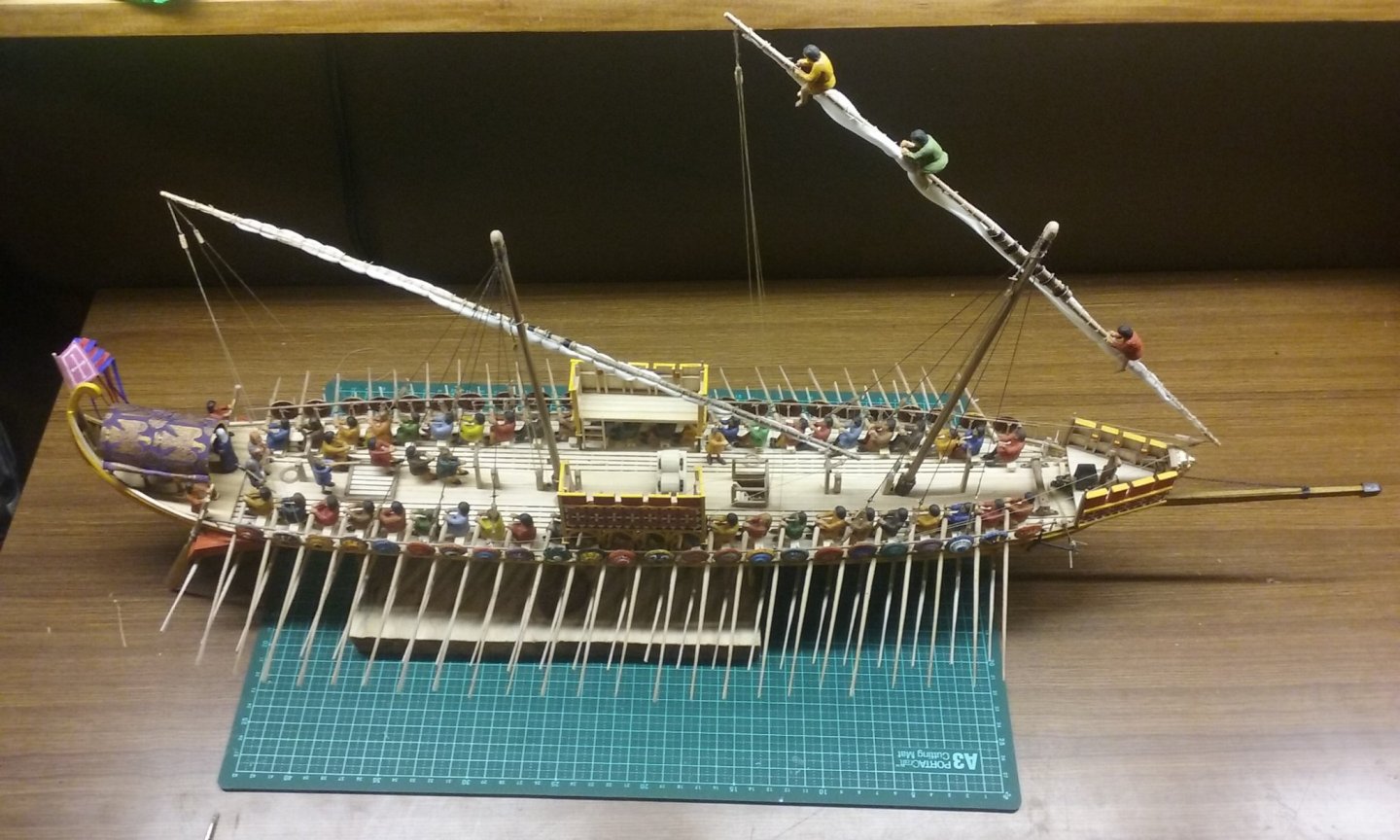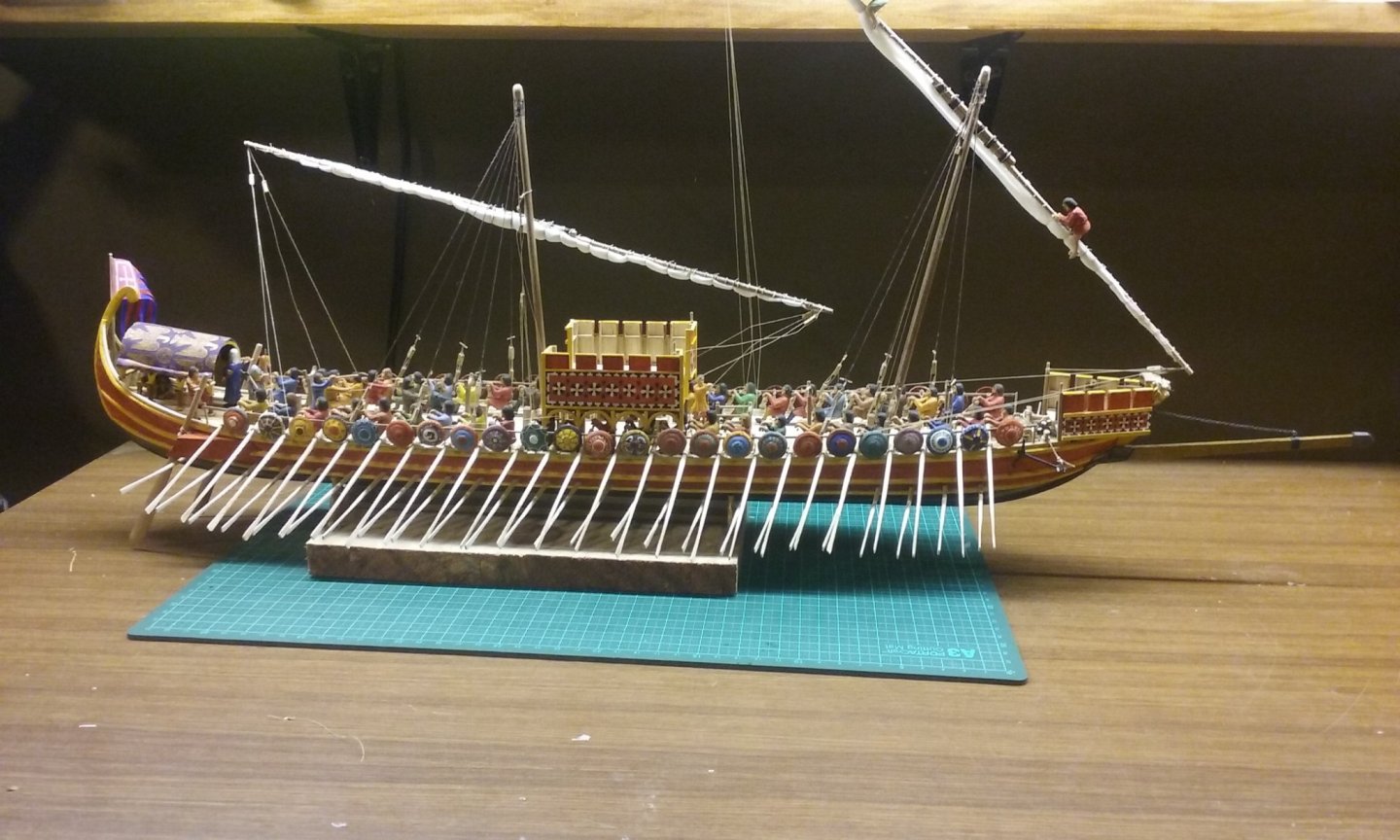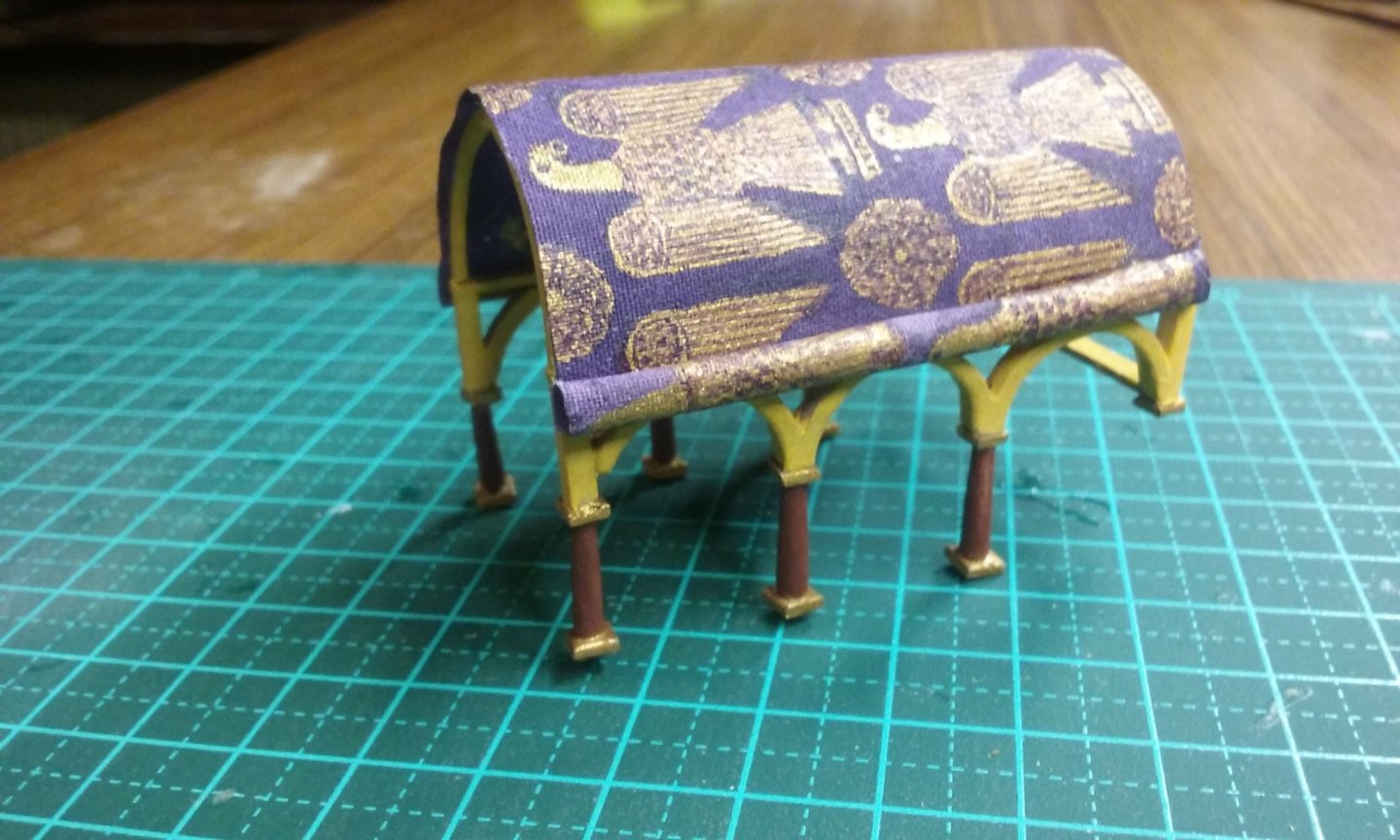-
Posts
7,982 -
Joined
-
Last visited
Content Type
Profiles
Forums
Gallery
Events
Everything posted by Louie da fly
-
Druxey, when I was a kid we had a record with two Goon shows on it - "Dishonoured" (from which the above quote comes) and "Tales of Old Dartmoor". At the time I could quote whole passages verbatim. I'm still pretty good, but out of practice. For example Moriarty's first line is actually "Welcome to the Indian river police, little boy." (which is part of a running gag that goes through the whole episode). Andrew - Nineveh was hundreds of miles inland - it was on the Tigris river, but I doubt a quinquireme could have floated there. However the Assyrians whose capital it was owned pretty much the eastern Mediterranean coast, so Masefield is only stretching the facts a little. On the other hand, it's doubtful the Assyrians had quinquiremes . . . as I understand it they were a later development. Per the Encyclopaedia Britannica " Ophir, unidentified region famous in Old Testament times for its fine gold. The geographic list of Genesis 10 apparently places it in Arabia, but in the time of Solomon (c. 920 BC), Ophir was thought of as being overseas. Gold, almug (or algum) wood (i.e., sandalwood), ivory, monkeys, and peacocks were procured there. Many areas of the Arabian Peninsula have been proposed as the site of Ophir; the principal alternative locations overseas are East Africa and India." Unless of course you mean the old town in New South Wales near Orange, which was "the site of Australia's first gold rush" (that's news to us in Ballarat - there are several other claimants to that honour . . .) And the curtains are rolled up! As far as Dick is concerned, he's currently building both a Byzantine merchantman and a frumious hulk . . . https://modelshipworld.com/topic/25641-the-incredible-hulc-by-woodrat-a-frumious-reconstruction/
-
Very similar except for size, OC - Great Harry was about one and a half times the burthen of the Mary Rose. They were built within 4 years of each other. The planking is just a matter of my own inexperience, nothing else. I just have to muddle through and hope I get it right (and keep the isopropanol handy in case of stuff-ups). In fact I've already started - here's the garboard strake begun for one side. I cut the rabbet for the garboard, but I've also had to shave the keel deadwood down so the planks will lie flush at that point, as I hadn't understood the process properly and the keel would have been too thick with the planks added. It's not finished - I've got to do the whole "approach" to the sternpost, but I'll continue that after I've got the first planks in and I can remove the black thread and move on upwards. I'm finding it rather difficult getting the deadwood smooth enough for the planks to lie flat. I'm hoping I've got it right - if not, remove planks and start again . . .
- 740 replies
-
- Tudor
- restoration
-
(and 4 more)
Tagged with:
-
Thanks everybody for all the comments. It's been a long journey, but worth it in the end. The figures became an albatross around my neck, but now they're done I'm happy I did that extra work. I think they make the model much more believable, and having them working on raising the yard and unfurling the sail is an unusual touch which I believe gives it more life. Moriarty: Hullo little boy Bluebottle: Oooh, it's the forces of evil Moranatum. (Thinks: I know how I can get rid of that dynamite) Mr Moranato, how would you like a nice long red cigar with a wick on the end of it? Moriarty: I'd like that very much. Bluebottle: I'll light it for you (sound of match being lit) WHOOOOSH! Bluebottle (from a great distance): Is it nice? Moriarty: It's gone out. WHOOSH! Bluebottle: I'll light it again for you . . KABOOOOM! It's one of the possibilities, though I might leave that one till later - after all, the Great Harry which I have yet to complete is a sort of super-carrack.
-
Good point. Plenty of 15th and 16th century pictures show ships with bonnets but no reef points. At least as many show neither - though in many cases I'm prepared to believe that's artist's error. I know of only a single one (a "great carrack" that doesn't have a date but looks to be early 16th century) that has reef points. Perhaps we're looking at lost technology, which was "rediscovered" later?
- 179 replies
-
- longship
- Helga Holm
-
(and 1 more)
Tagged with:
-
That's the final stage - next thing to do. Mind you the cats aren't allowed into the Boat Room (the name by which my workshop is known at home) so it's relatively safe for the moment.
-
Agreed. But they had to be invented at some time - Most contemporary pictorial representations of ships before the 14th century don't show them. Is this because they didn't exist, or did the artist just leave them out?
- 179 replies
-
- longship
- Helga Holm
-
(and 1 more)
Tagged with:
-
Most ingenious, Dick. And up to your usual superb standard of workmanship.
- 186 replies
-
- keelless
- reverse clinker
- (and 4 more)
-
Those bottom blocks look very good. A good solution for fixing them to the hull, too. And I agree - she looks better with the boat behind her than alongside.
-
Ok, the model itself is finished, and now I've done the stand. The wooden part, painted gold, was done ages ago. The base is made of a piece from a broken slab of marble that was in the garden when we bought the house. Marble - Byzantium; of course they belong together! I was going to paint a fairly elaborate decorative border - vines curling around and all that. Then I decided the focus should be on the ship, not the stand, so I've kept it simple. Just the description and date in a readable font. Unfortunately after all the work I did on carving that beautiful golden stand, it's almost invisible behind the oars.
-
Hardly an equal contest - Congress had almost three times the weight of metal and a much larger crew. Savage could have avoided action with a force so superior with no shame. As she was unable to get away, she gave a superb account of herself, surrendering only after losing her mizzenmast and considerable damage to the mainmast, and suffering 42 casualties including the captain. She inflicted almost exactly the same number of casualties on the Congress, though with a considerably lighter broadside. A very valiant defence against heavy odds.
-
Thanks everybody for all the help, advice and encouragement during this build - which as taken considerably longer than I expected. You've made the process much more enjoyable, and I have used tips from very many of you in solving problems and in making the model better than it would otherwise have been. It's been an experience. Now to figure out where I go from here . . .
-
Oh, and almost forgot . . Fascinating stuff, Cathead. In Western Australia there's a town in the far north-west called Marble Bar, after the big reddish and purple rock outcrop in the local creek. If you ever go to Marble Bar it's traditional to have a beer in the Ironclad pub (built 1891) "The hotel was constructed of corrugated Iron. It was allegedly given the name by American miners who were reminded of the Ironclad ships from the United States." (Wikipedia) The town is celebrated as the hottest place in Australia, "The hottest day recorded for Marble Bar is 49.2 degrees C (120 degrees F) in 1905. Marble Bar is renowned as the hottest town in Australia and can spend every day for more than a month with temperatures topping 40C (104 F)" But the whole point of it is that the "marble" of the bar is actually jasper. You can't trust anybody these days . . . How did you know about the ducks?
-
Thanks everybody for the all the comments. It's very nice to have finally finished this build, and I'm pretty happy with the final result. Actually, much appreciated. Just done. I had to figure out how to make it all work - never posted in the galley before. I've got a few ideas, but haven't made up my mind yet - so many choices . . And I still have to finish off the Great Harry. Mustafa must be an Arabian immigrant - which wasn't all that uncommon. A lot of mutual exchange of populations. But a more likely group would be Con, Theo and Iouannis . . .
-
Mike, that Venetian ship looks very beautiful. You're doing the right thing by putting it off until you build up your skills. Scratch building is a whole extra level of difficulty, but is very rewarding. I only scratch build nowadays - I far prefer it. When you get to doing the Panart Victory (and I understand you want to ease into the hobby gradually - very wise indeed) there's at least one build log for it here: This might help you with your own Victory project. And you might find others if you do a search (top right of the page) for "Panart Victory".
-
Not so sure about the building, Mark - I'm very aware of its shortcomings in that department - but many thanks.
-
The awning for the poop has been painted for a long time, with an eagle motif. And now I've painted the substructure to match the rest of the ship, particularly the castles. The columns are wood painted to resemble porphyry, the purplish marble reserved for Imperial use. And now to add the figures I've been saving up all this time. The Emperor (Alexios I Komnenos, known to the vikings as Kirjalax - from Kyrie (lord) Alexios). And now the awning, and the flute-player who gives the time to the oarsmen (far right of the picture, in blue): And the Emperor's Varangian (Viking) bodyguards: And two Imperial courtiers: Unfortunately, you can barely see the Emperor under the awning: I just have to tidy up a couple of ropes and the ship is complete, after more than 5 years! I still have to complete the stand, add a nameplate and make a case. But that's it. I'm already having withdrawal symptoms . . .
-
I'm pretty sure that when I was a kid in a youth orchestra we went to Bridgetown as part of a concert tour and we all got billeted overnight by local families - I ended up being billeted at the pub (which was a bit of surprise). I can date it pretty well, because we met a local girl called Rita and Sergeant Pepper's had just come out, so we called her "lovely Rita". Not sure if she got the reference . . .
-
You're off to a good start, Dan. I can see what you mean about having somewhere to store tools, but the workspace looks ok, to start with at least. Maybe down the track you'll be able to organise something a bit more user-friendly, but I've seen the most amazing stuff produced from pretty minimal working spaces.
About us
Modelshipworld - Advancing Ship Modeling through Research
SSL Secured
Your security is important for us so this Website is SSL-Secured
NRG Mailing Address
Nautical Research Guild
237 South Lincoln Street
Westmont IL, 60559-1917
Model Ship World ® and the MSW logo are Registered Trademarks, and belong to the Nautical Research Guild (United States Patent and Trademark Office: No. 6,929,264 & No. 6,929,274, registered Dec. 20, 2022)
Helpful Links
About the NRG
If you enjoy building ship models that are historically accurate as well as beautiful, then The Nautical Research Guild (NRG) is just right for you.
The Guild is a non-profit educational organization whose mission is to “Advance Ship Modeling Through Research”. We provide support to our members in their efforts to raise the quality of their model ships.
The Nautical Research Guild has published our world-renowned quarterly magazine, The Nautical Research Journal, since 1955. The pages of the Journal are full of articles by accomplished ship modelers who show you how they create those exquisite details on their models, and by maritime historians who show you the correct details to build. The Journal is available in both print and digital editions. Go to the NRG web site (www.thenrg.org) to download a complimentary digital copy of the Journal. The NRG also publishes plan sets, books and compilations of back issues of the Journal and the former Ships in Scale and Model Ship Builder magazines.




